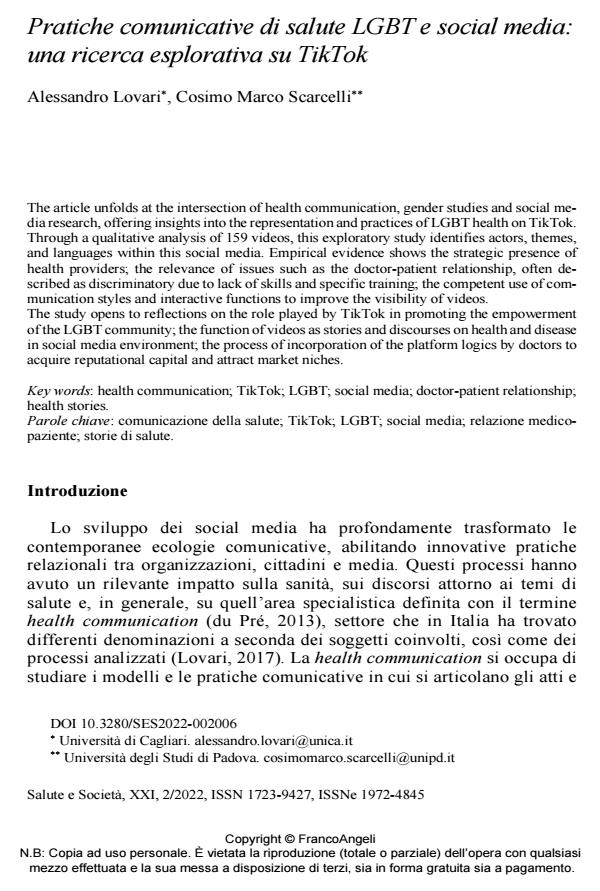Pratiche comunicative di salute LGBT e social media: una ricerca esplorativa su TikTok
Titolo Rivista SALUTE E SOCIETÀ
Autori/Curatori Alessandro Lovari, Cosimo Marco Scarcelli
Anno di pubblicazione 2022 Fascicolo 2022/2
Lingua Italiano Numero pagine 17 P. 67-83 Dimensione file 94 KB
DOI 10.3280/SES2022-002006
Il DOI è il codice a barre della proprietà intellettuale: per saperne di più
clicca qui
Qui sotto puoi vedere in anteprima la prima pagina di questo articolo.
Se questo articolo ti interessa, lo puoi acquistare (e scaricare in formato pdf) seguendo le facili indicazioni per acquistare il download credit. Acquista Download Credits per scaricare questo Articolo in formato PDF

FrancoAngeli è membro della Publishers International Linking Association, Inc (PILA)associazione indipendente e non profit per facilitare (attraverso i servizi tecnologici implementati da CrossRef.org) l’accesso degli studiosi ai contenuti digitali nelle pubblicazioni professionali e scientifiche
The article unfolds at the intersection of health communication, gender studies and social media research, offering insights into the representation and practices of LGBT health on TikTok. Through a qualitative analysis of 159 videos, this exploratory study identifies actors, themes, and languages within this social media. Empirical evidence shows the strategic presence of health providers; the relevance of issues such as the doctor-patient relationship, often described as discriminatory due to lack of skills and specific training; the competent use of communication styles and interactive functions to improve the visibility of videos. The study opens to reflections on the role played by TikTok in promoting the empowerment of the LGBT community; the function of videos as stories and discourses on health and disease in social media environment; the process of incorporation of the platform logics by doctors to acquire reputational capital and attract market niches.
Parole chiave:comunicazione della salute; TikTok; LGBT; social media; relazione medico-paziente; storie di salute.
Alessandro Lovari, Cosimo Marco Scarcelli, Pratiche comunicative di salute LGBT e social media: una ricerca esplorativa su TikTok in "SALUTE E SOCIETÀ" 2/2022, pp 67-83, DOI: 10.3280/SES2022-002006